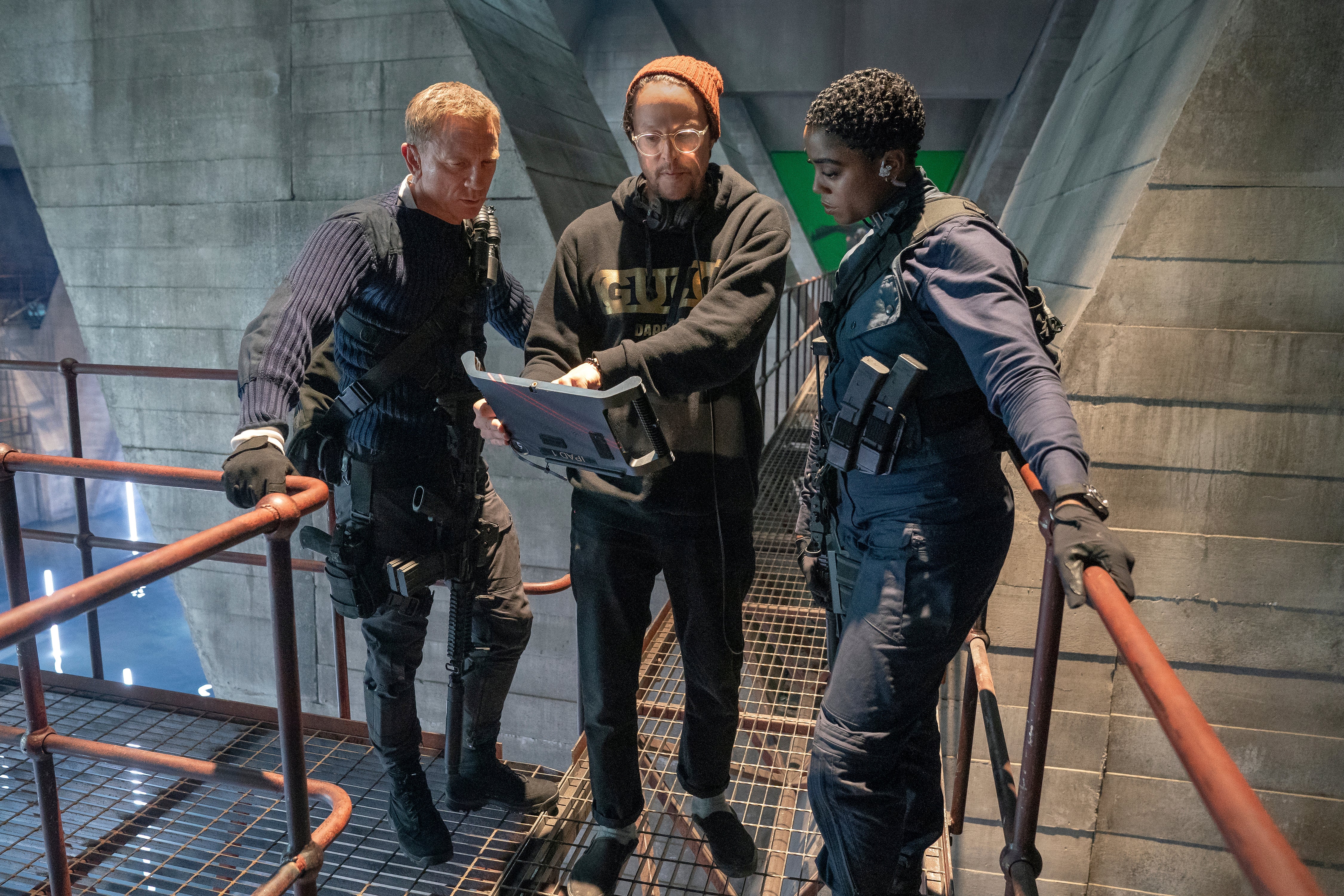No Time to Pee – why today’s blockbusters are just too long
Want to see the new Bond? Ridley Scott’s ‘The Last Duel’? ‘Dune’? Better pack a three-course meal and consult an osteopath, says Fiona Sturges. Or better still, just make the movies shorter


Your support helps us to tell the story
From reproductive rights to climate change to Big Tech, The Independent is on the ground when the story is developing. Whether it's investigating the financials of Elon Musk's pro-Trump PAC or producing our latest documentary, 'The A Word', which shines a light on the American women fighting for reproductive rights, we know how important it is to parse out the facts from the messaging.
At such a critical moment in US history, we need reporters on the ground. Your donation allows us to keep sending journalists to speak to both sides of the story.
The Independent is trusted by Americans across the entire political spectrum. And unlike many other quality news outlets, we choose not to lock Americans out of our reporting and analysis with paywalls. We believe quality journalism should be available to everyone, paid for by those who can afford it.
Your support makes all the difference.Should you decide to go to the cinema this weekend, there will be some practicalities to consider beforehand. I’m not referring to mask-wearing or social distancing, though, for some, the anxieties around Covid will be enough to keep them at home. I mean there’s a chance you will end up sitting there for up to three hours, a commitment that raises some vital questions, among them: should you eat directly before the film or provoke the ire of your neighbours by unveiling a three-course picnic? Should you avoid all fluids lest the need to pee mid-film become overwhelming? And what of the risk of DVT? Older readers may recall the days when uniformed ushers and usherettes would appear in the aisles selling ice creams in the interval. Perhaps it’s time to bring them back, though selling compression stockings rather than Cornettos.
It’s hard to pinpoint exactly when watching a film became a feat of endurance rather than a nice thing to do in your downtime. Certainly, you need to have some serious time on your hands, and that’s before you factor in adverts and trailers. Among the viewing choices at my local multiplex this weekend are No Time to Die (2 hours 43 minutes), The Last Duel (2hrs 33mins) and Shang-Chi and the Legend of the Ten Rings (2hrs 12mins). Dune (2hrs 35mins) will soon be on its way, too. Should I wish to retain the feeling in my legs, I would be better off watching The Addams Family 2, which clocks in at a more reasonable 1hr 33mins, or Venom: Let There Be Carnage, a restrained 1hr 37mins.
Longer running times would seem to go against the prevailing notion that we are all suffering from shortened attention spans. The idea that Gen-Z, which loves nothing more than watching 15-second TikTok videos, will also happily sit through the latest superhero epic is tricky to compute. Of course, there have always been preposterously long films, the longest of all invariably being fantasy or historical epics. Think Lawrence of Arabia (3hrs 42mins), Doctor Zhivago (3hrs 17mins), Gone with the Wind (3hrs 58mins), James Cameron’s Titanic (3hrs 14mins) or Peter Jackson’s Return of the King (3hrs 21mins). By comparison, comedies and romantic dramas have remained closer to around 100 minutes – a marker of their supposedly disposable nature. Nonetheless, we are in a situation where tightly edited, pacey films are more the exception than the rule, and swollen and meandering epics seen as entirely acceptable. From a consumer point of view, we live in a culture of bigger, louder, longer, as if these things alone add up to value for money. How on earth did we get to this point?

We can blame it partly on the blockbuster. Jaws is popularly considered the first “summer blockbuster” of the modern era – yet it still had a reasonable run-time. The Star Wars franchise, though, soon strayed towards the idea that “epic” films need “epic” length to match their “epic” budgets, with 1983’s Return of the Jedi clocking 2hrs 11mins. Since then, blockbusters have erred on the side of interminable, though, in recent years, Marvel films have picked up the concept and run with it, making a visit to the cinema closer in experience to a day out at a theme park. (Business idea: a free osteopath consultation with every Marvel Universe ticket purchased.)
There is a sense, in all this, of directors and studios aiming for longer running times to give their projects an air of seriousness and weight, a misapprehension that is often exacerbated by Academy Awards committees, which tend to reward hopelessly long films over shorter ones. But length is by no means an indicator of quality. Hand me the scissors and I will happily trim the fat off Quentin Tarantino’s Once Upon a Time in Hollywood, or Scorsese’s The Irishman. An overlong picture may feel more of an event but it invariably means the director has suffered a loss of perspective on the pacing of their masterwork, not to say the size of the average human bladder.
Our changing television habits are also contributing factors. The rise of box sets in the early Noughties saw audiences become accustomed to storytelling stretched out over multiple seasons rather than a couple of hours. As streaming gathered pace, bingeable series – the kind that could last the length of the average holiday – started to be seen as desirable. So now, in a relatively new twist, Hollywood finds itself in competition with prestige TV. But it’s one thing to burn through a 22-part series at home, where you have access to a kettle, a toilet and the pause button, it’s another to be rooted to the spot while sitting in the dark surrounded by strangers.
Film habits are cyclical, however, and, while the supposedly “epic” movie is not a new concept, the current vogue for three-hour marathons will surely pass. In the meantime, film-goers must know their limits. Right now, I would quite like to see No Time to Die on the big screen but have decided not to out of courtesy to my coccyx. Art may often come out of suffering, but there’s no reason why the agony should be mine.

Join our commenting forum
Join thought-provoking conversations, follow other Independent readers and see their replies
Comments